The fourth Moon landing mission began on July 26, 1971, with the launch of Apollo 15. A giant Saturn V rocket lifted off from Launch Pad 39A at NASA’s Kennedy Space Center (KSC) in Florida with the crew of Commander David R. Scott, Command Module Pilot Alfred M. Worden, and Lunar Module Pilot James B. Irwin strapped inside their capsule. After their Saturn V rocket delivered them into a parking orbit around the Earth, the third stage reignited to send them on their way to the Moon. After a three-day coast to the Moon, Scott, Worden, and Irwin arrived in lunar orbit on July 29 to prepare for the landing in and exploration of the Hadley-Apennine site and to conduct science from lunar orbit.
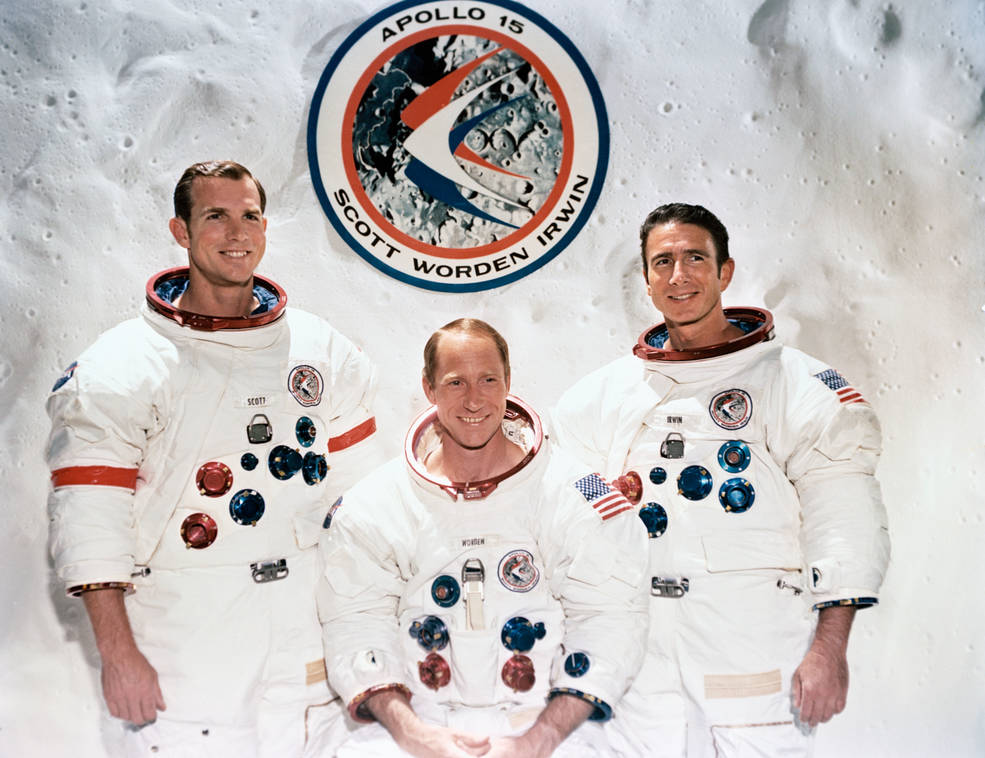
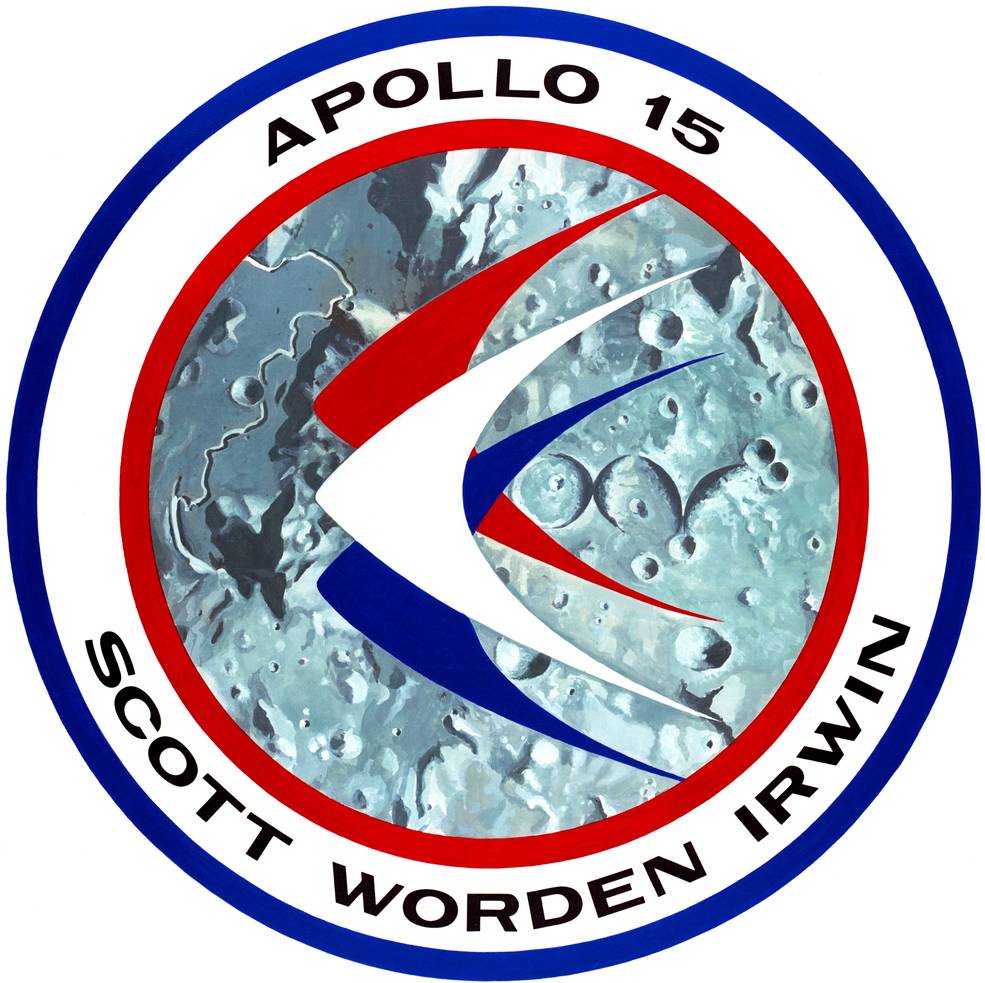
Left: The Apollo 15 crew of David R. Scott, left, Alfred M. Worden, and James B. Irwin. Right: The Apollo 15 crew patch.
The terminal countdown for Apollo 15’s launch began on July 24 and proceeded without any technical issues. Engineers in Firing Room 1 of KSC’s Launch Control Center (LCC) monitored all aspects of the countdown, including the final fueling of the Saturn V rocket. Scott, Worden, and Irwin ate their traditional steak and eggs breakfast before putting on their spacesuits and taking the Astrovan to Launch Pad 39A, where they boarded their spacecraft, the Command Module (CM) Endeavour. Scott took the left-hand seat, Worden the middle, and Irwin the right. Thousands of spectators assembled along the beaches near KSC to view the launch, the largest crowd to view a human spaceflight liftoff since the Apollo 11 launch two years earlier.
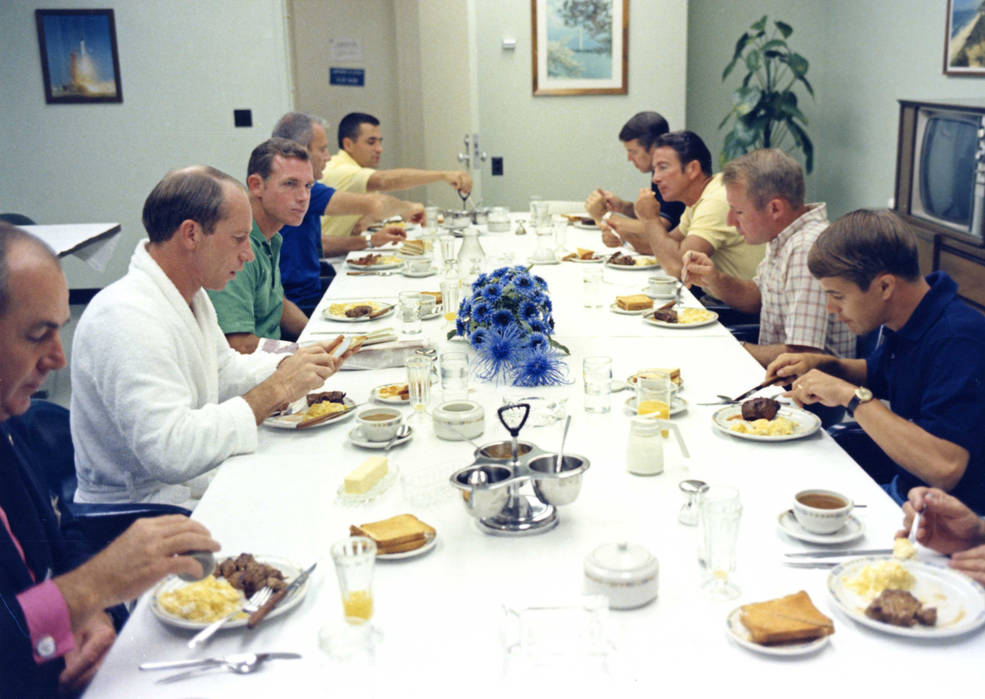
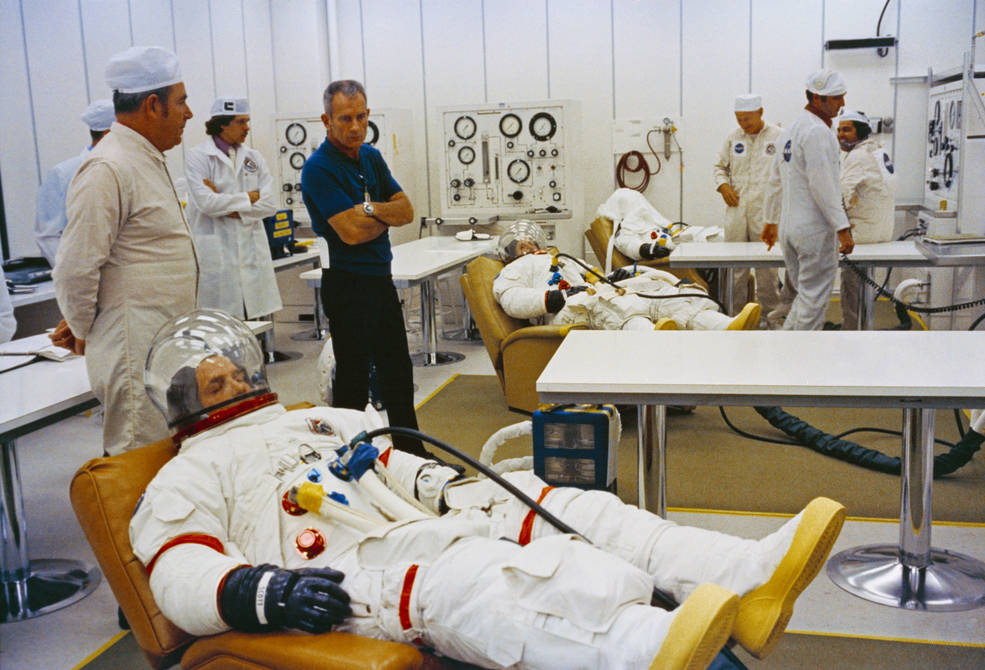
Left: At the traditional prelaunch breakfast, Apollo 15 astronauts David R. Scott, Alfred M. Worden, and James Irwin are joined by backup and support astronauts and managers. Right: Apollo 15 astronauts Scott, left, Irwin, and Worden suiting up prior to their launch.
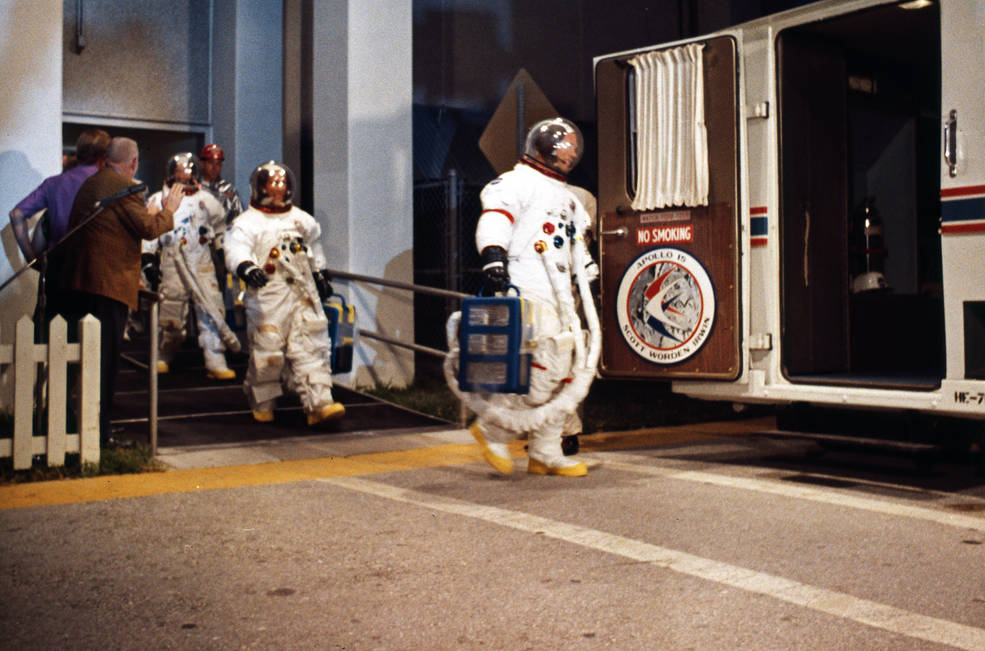
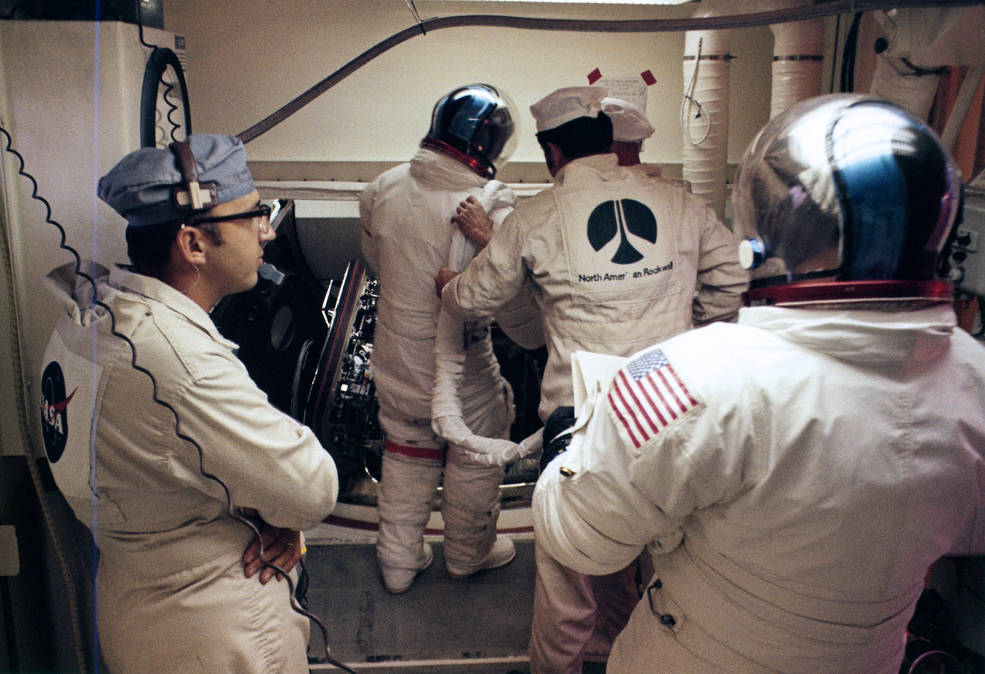
Left: Apollo 15 astronauts Alfred M. Worden, left, James B. Irwin, and David R. Scott about to board the Astrovan for the ride out to Launch Pad 39A. Right: In the White Room at Launch Pad 39A, Apollo 15 astronaut Scott, left, is about to board the Command Module Endeavour as Irwin awaits his turn.
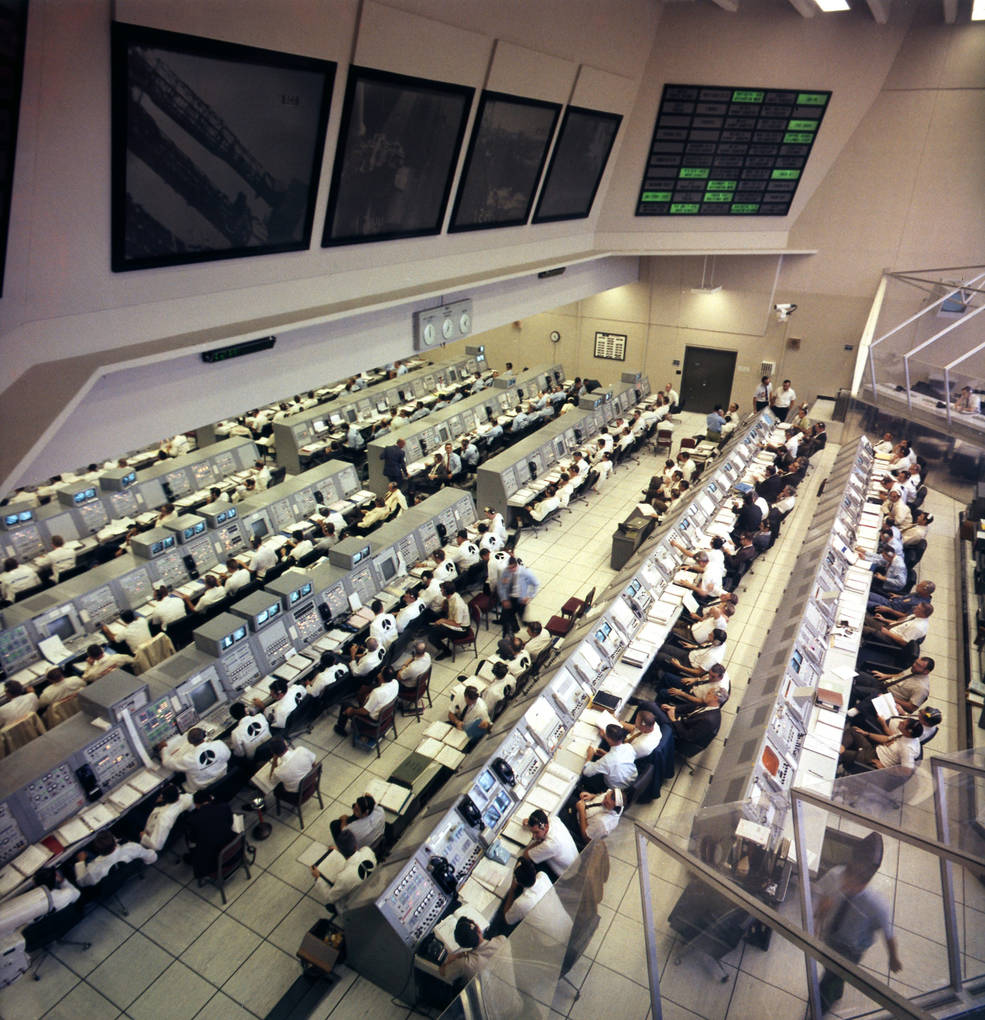
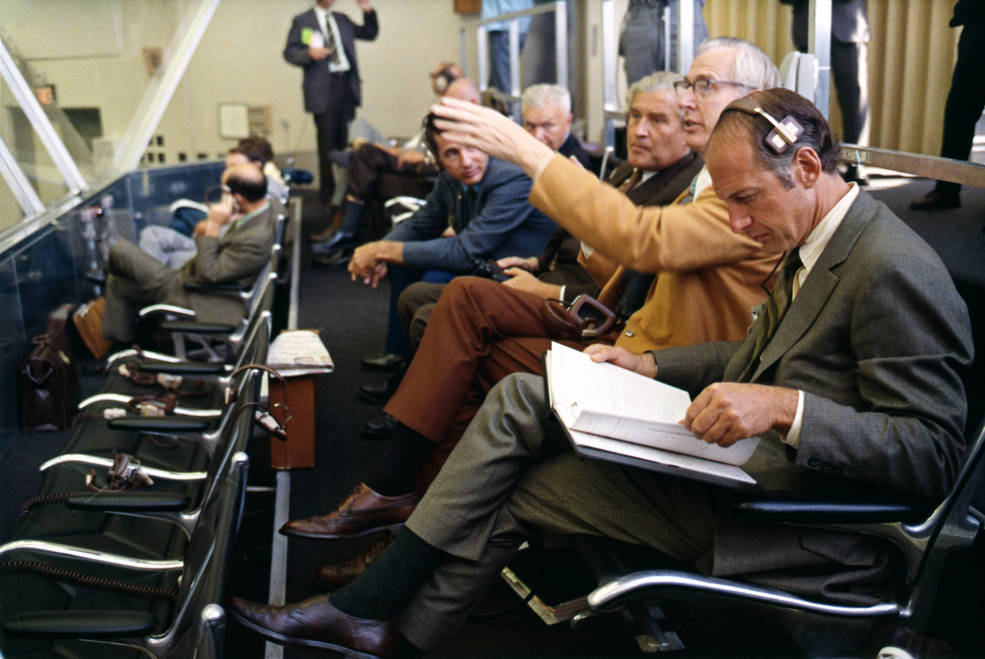
Left: In Firing Room 1 of the Launch Control Center at NASA’s Kennedy Space Center in Florida, engineers monitor the progress of the Apollo 15 countdown. Right: In Firing Room 1, NASA’s Deputy Associate Administrator for Planning and designer of the Saturn V rocket Wernher von Braun, left, NASA Administrator James C. Fletcher, and NASA Deputy Administrator George M. Low observe the Apollo 15 countdown.
The countdown continued smoothly and the weather was perfect for launch. Liftoff came at 9:34 a.m. Eastern time on July 26, 1971. The Saturn V rocket launched Apollo 15 into a clear morning sky. Ten seconds after the first motion, the rocket cleared the launch tower and mission responsibility shifted from KSC’s Firing Room 1 to the Mission Control Center (MCC) at the Manned Spacecraft Center, now NASA’s Johnson Space Center in Houston. In the MCC, Flight Director Gerald D. “Gerry” Griffin led his Gold Team of controllers who monitored this phase of the mission, with NASA astronaut C. Gordon Fullerton acting as capsule communicator (capcom), the person who talked directly to the crew during the flight. After burning for 2 minutes and 41 seconds and lifting the rocket to an altitude of 40 miles, the first stage was jettisoned. The second stage continued to power the ascent until 9 minutes 9 seconds, taking the spacecraft nearly to orbit, at which time it too was jettisoned, and the third stage took over. It burned for two and a half minutes to place Apollo 15 into a circular 106-mile-high parking orbit around the Earth. The astronauts were now weightless.

Liftoff of Apollo 15!
For the next two and a half hours, Apollo 15, still attached to the Saturn V’s third stage, orbited the Earth while the crew and Mission Control evaluated the health of all onboard systems. With all systems determined to be in good order, capcom Fullerton called up to the astronauts, “You are Go for TLI,” meaning Trans-Lunar Injection, the second burn of the Saturn V’s third stage to send them out of Earth orbit and toward the Moon. Twenty minutes later, the engine ignited and fired for 5 minutes and 51 seconds, increasing Apollo 15’s velocity to 24,220 miles per hour to begin the three-day coast to the Moon.
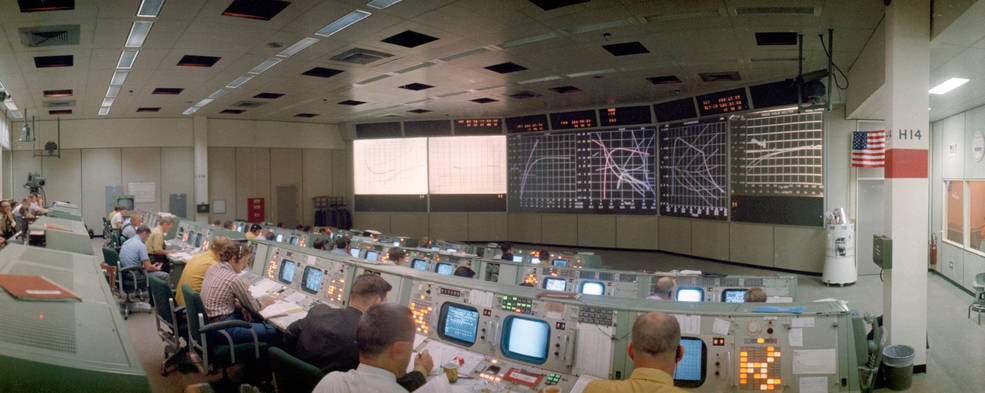
The Mission Operations Control Room of the Mission Control Center at the Manned Spacecraft Center, now NASA’s Johnson Space Center in Houston, approximately 45 minutes after the Apollo 15 launch.
Twenty minutes after the shutdown of the third stage engine, Fullerton called up to the crew that they were Go for the transposition and docking maneuver. A few minutes later, Worden separated the Command and Service Module Endeavour from the spent stage that still held the Lunar Module (LM) Falcon. He moved Endeavour about 50 feet away before turning it around and starting the rendezvous process. Irwin set up a camera in the window and Mission Control received the image of the LM as they slowly approached it. After a few minutes, Worden brought the spacecraft together to achieve a soft docking. Latches then joined the two to complete a hard docking. By the conclusion of the docking maneuver, three and a half hours after liftoff, Apollo 15 had traveled more than 8,500 miles from Earth.
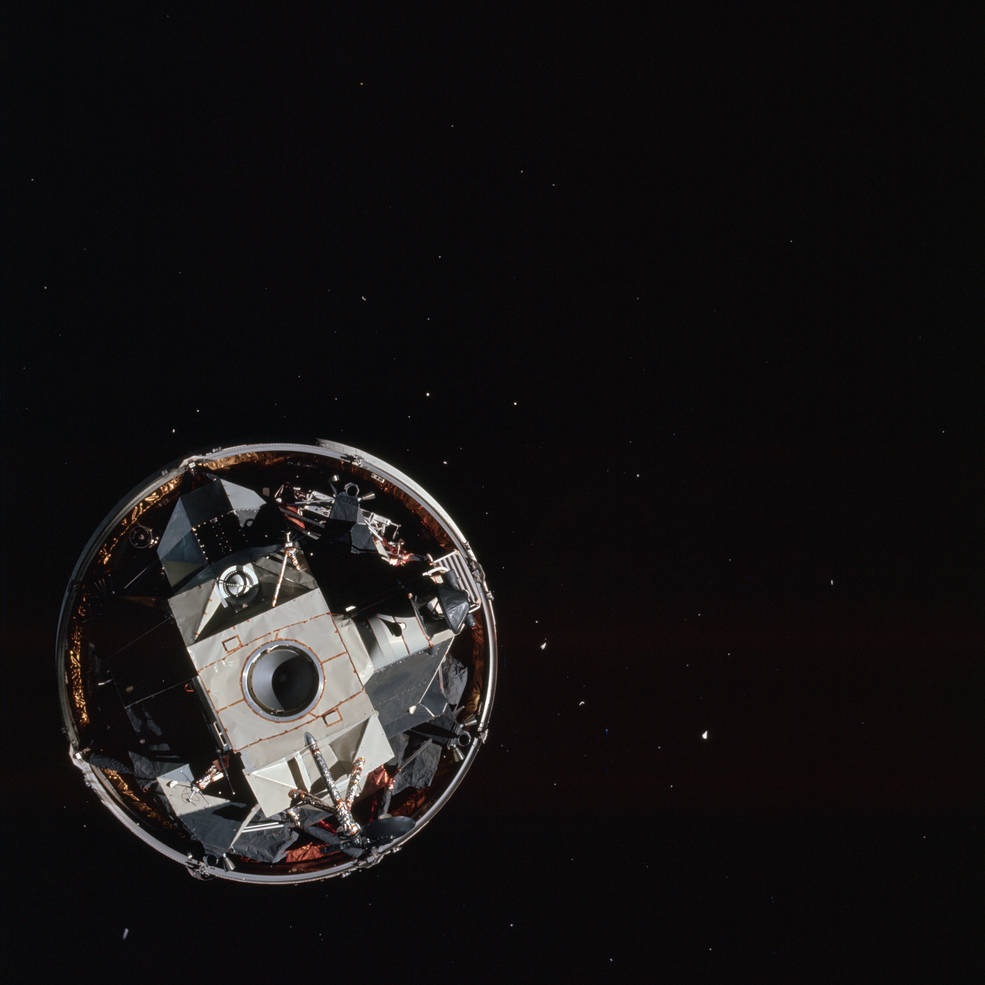
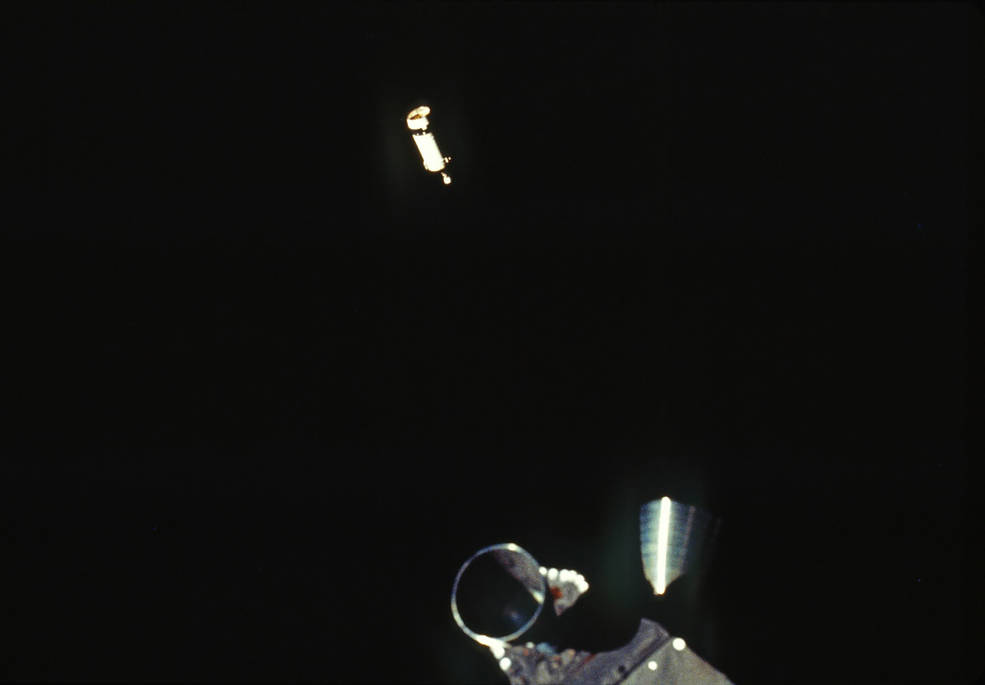
Left: The Apollo 15 Lunar Module Falcon still attached to the Saturn V rocket’s third stage during the transposition and docking maneuver. Right: The Saturn V rocket’s spent third stage as it moves away from the now docked Apollo 15 spacecraft.
One of the astronauts’ first tasks involved pressurizing the LM using oxygen from the Endeavour. About 45 minutes after docking, they separated from the now spent third stage and watched it as it drifted away. Ground controllers commanded the stage onto a trajectory to impact on the Moon to trigger the seismometers left on the surface by the Apollo 12 and 14 crews. Scott, Worden, and Irwin then took their first meal break of the mission. In Mission Control, Griffin’s Gold Team handed over to Flight Director Milton L. Windler and his Maroon Team of controllers, with astronaut Karl G. Henize replacing Fullerton as capcom. Henize informed the crew that because the third stage had performed so well, the first planned mid-course correction maneuver was not required. The astronauts took a series of ultraviolet photographs of both the Earth and the Moon during the outbound trip, as well as some in visible wavelengths, showing the Earth as a shrinking blue orb. They placed their spacecraft into the passive thermal control (PTC) or barbecue mode, in which the vehicle slowly rotated along its longitudinal axis to evenly distribute temperatures. Following that, they ate their first dinner in space. After a final report of the day to Mission Control, Scott, Worden, and Irwin began their first sleep period in space 15 hours after leaving Earth, now nearly 80,000 miles away.
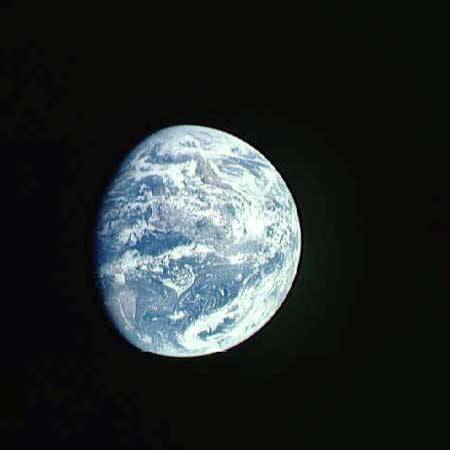
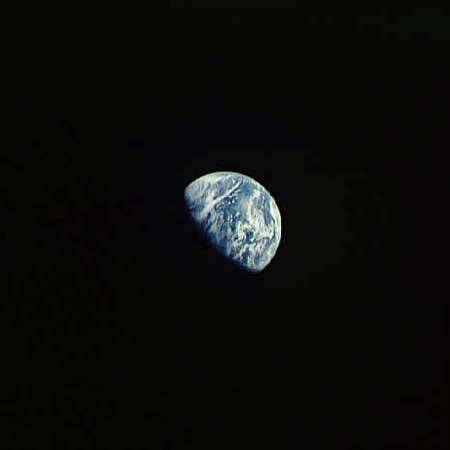
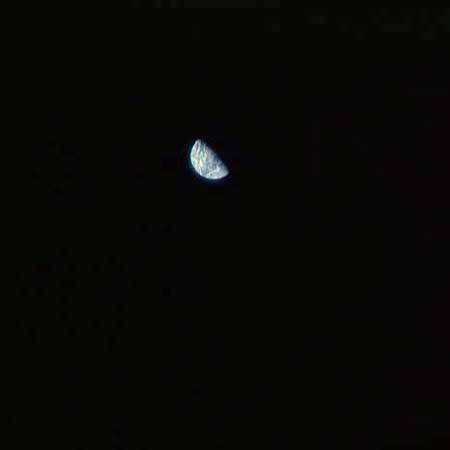
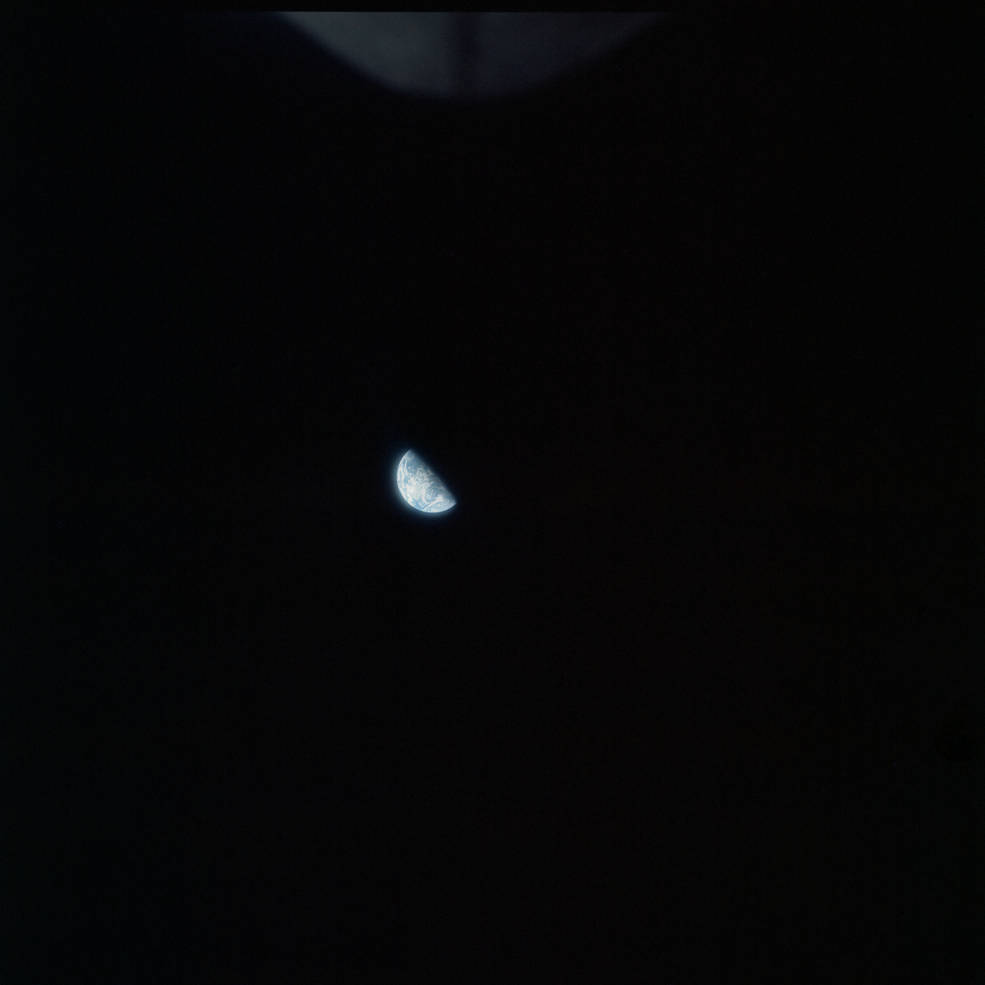
Successive views of the receding Earth as Apollo 15 makes its way to the Moon, from 17,940 miles shortly after separation from the third stage, left, 54,900 miles, 144,900 miles, and 206,000 miles.
While the crew slept, in Mission Control Flight Director Glynn S. Lunney and his Black Team of controllers took up their positions at the consoles, with Apollo 15 backup Command Module Pilot Vance D. Brand as the new capcom. And since the crew’s scheduled sleep period lasted 10 hours, Flight Director Griffin and his team returned to their consoles before the astronauts woke up. Astronaut Joseph P. Allen took his position as capcom. When the crew began their second day in space, they had traveled more than 120,000 miles from Earth. Three hours later, Apollo 15 passed the halfway point between the Earth and the Moon, at an equal distance of 130,000 miles from each. The astronauts conducted a brief test of the Service Propulsion System (SPS), the Service Module’s large engine, to identify a short circuit in one of the control switches, but not one that caused any concern or major changes to the flight plan. The test also served as a small midcourse correction maneuver to further refine their already accurate trajectory. Their path was so accurate that Mission Control canceled the third planned correction maneuver.
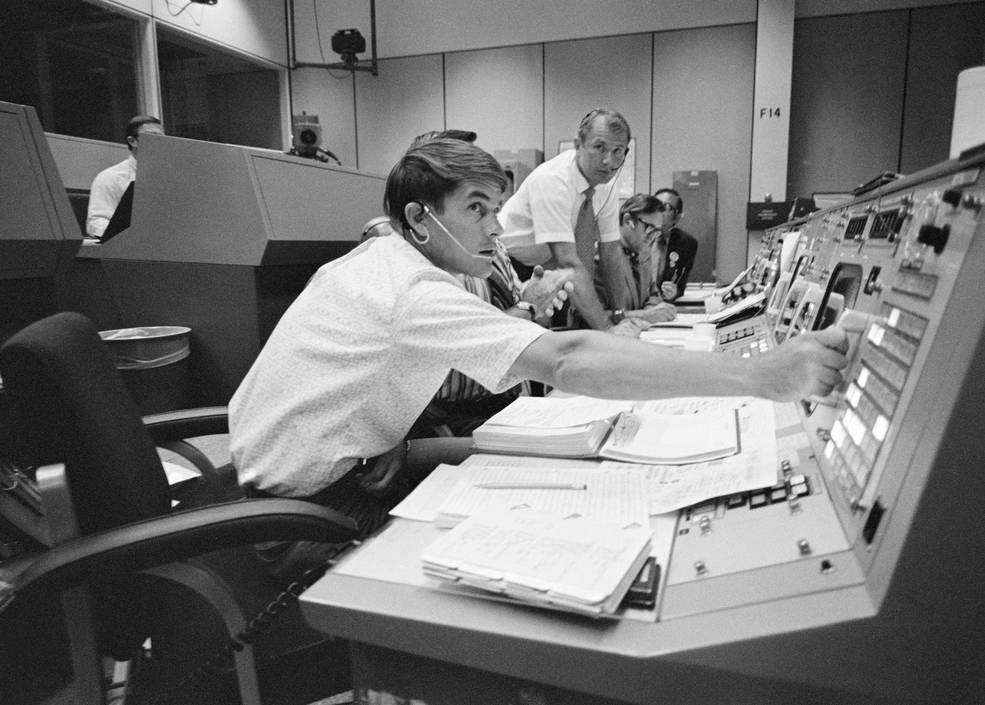
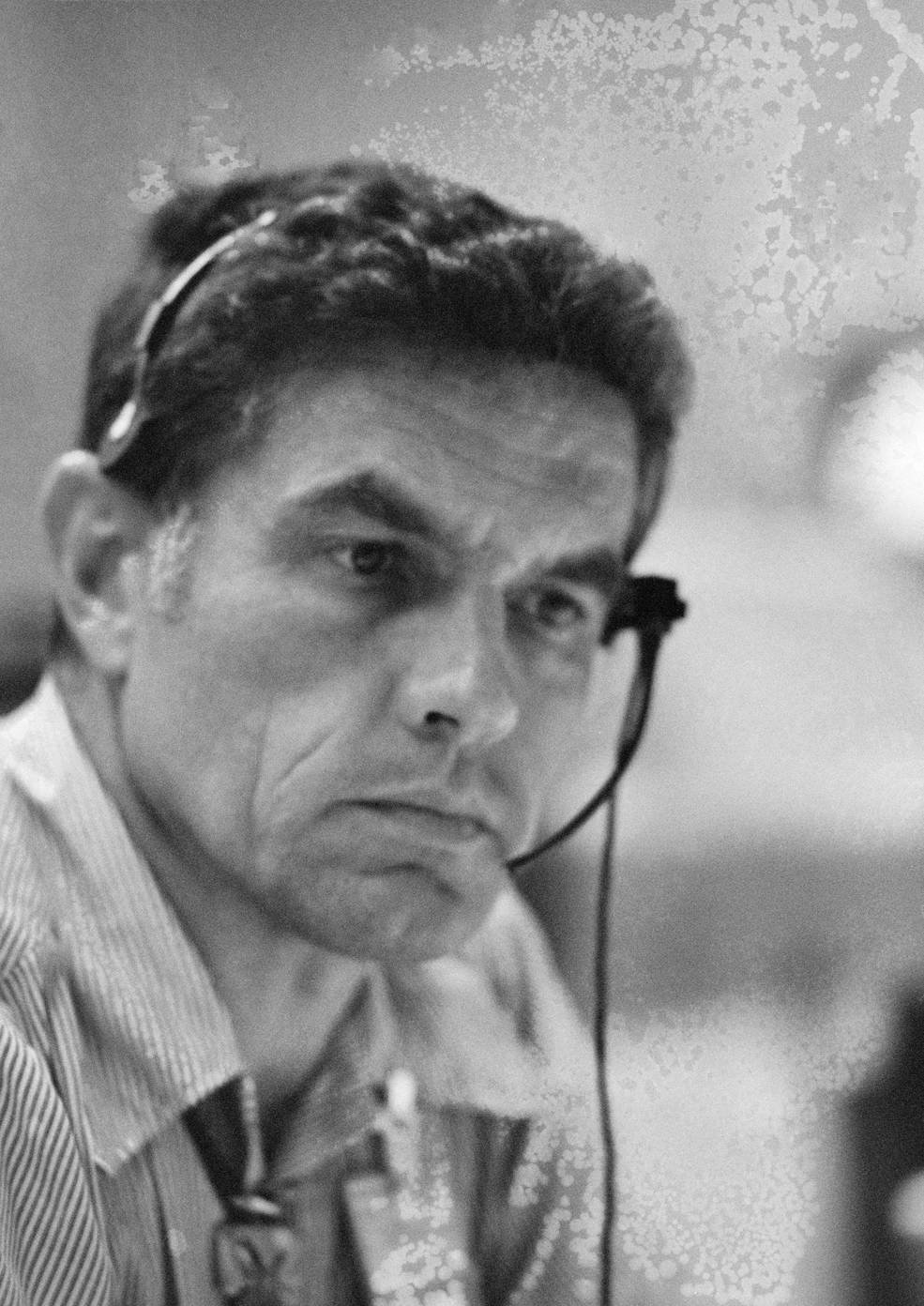
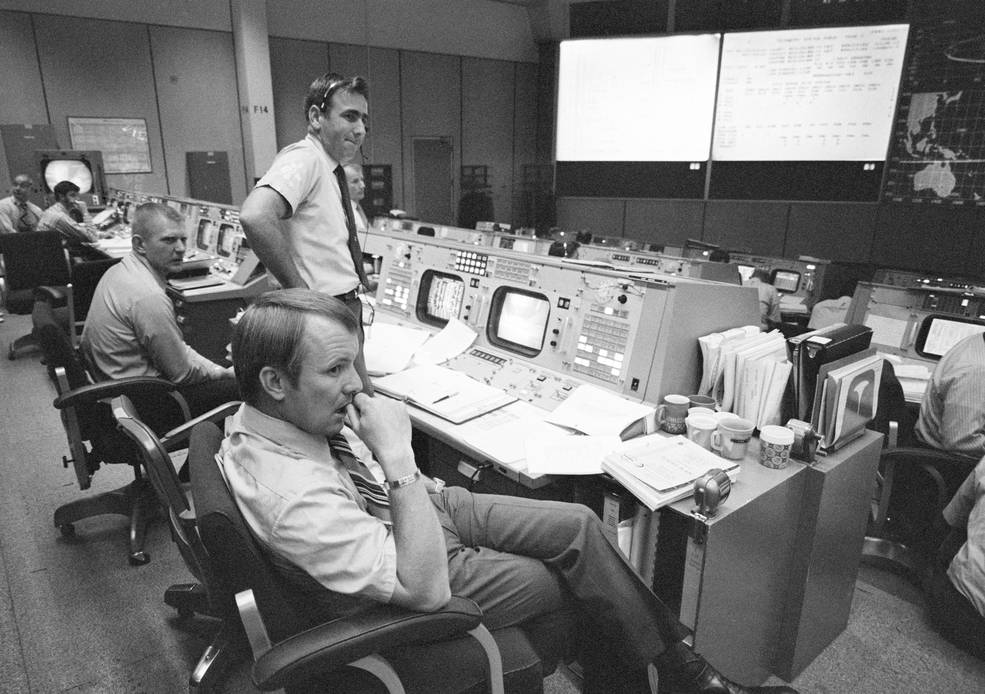
Left: In the Mission Control Center (MCC) at the Manned Spacecraft Center, now NASA’s Johnson Space Center in Houston, capsule communicator (capcom) Joseph P. Allen, left, and Apollo 15 backup Command Module Pilot Vance D. Brand monitor the Apollo 15 mission. Middle: Astronaut Karl D. Henize, serving as capcom during Apollo 15. Right: Flight Directors Eugene F. Kranz, left, Milton L. Windler, and Gerald D. Griffin monitor the progress of Apollo 15.
Flight Director Windler’s Maroon Team of controllers, including capcom Henize, resumed their positions on console for the next major activity of the day, the activation and checkout of the LM Falcon. The astronauts equalized the pressure between the two spacecraft, first opened the CM’s hatch, removed the docking mechanism, opened the LM’s hatch, and entered the landing craft. The crew turned on the color TV camera and Mission Control could clearly see Scott and Irwin check all the LM’s switches to ensure that they were in their proper positions. The only problem the astronauts noted was a cracked glass outer pane on a tapemeter. The broadcast lasted about 50 minutes, following which the astronauts all returned to Endeavour. Flight Director Lunney’s team, with astronaut Robert A.R. Parker as capcom, came on console just as the crew began their second sleep period, shortly after Apollo 15 passed the halfway point in time on their journey to the Moon, now 164,000 miles from Earth.
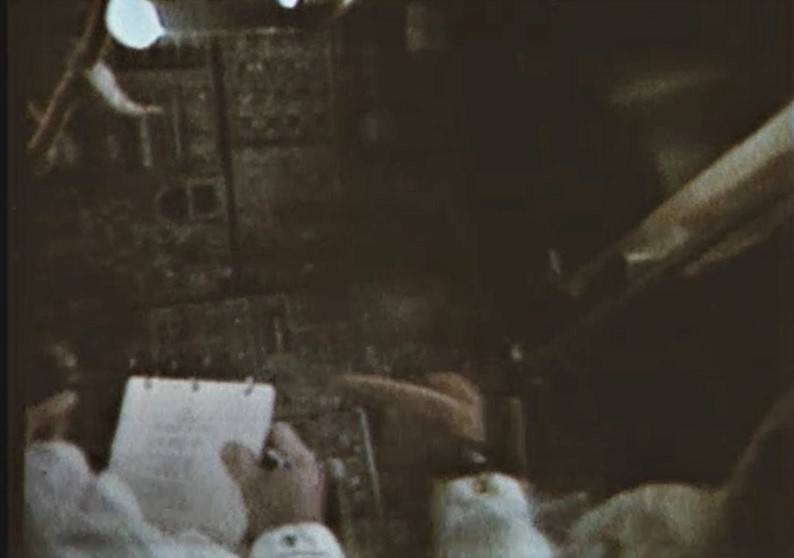
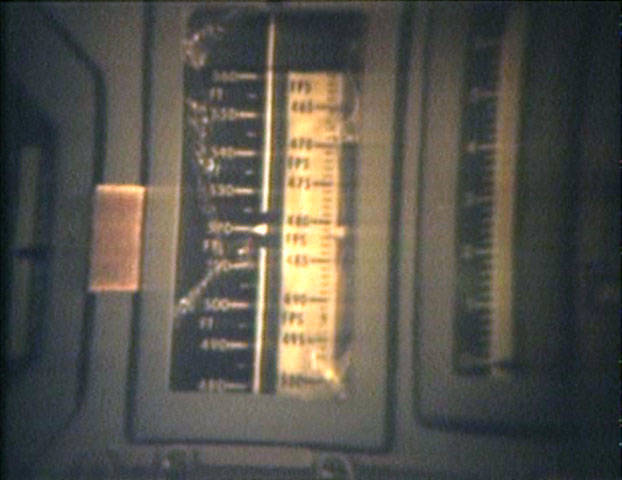
Left: Still image from TV downlink of Apollo 15 astronauts David R. Scott, left, and James B. Irwin during the first activation and inspection of the Lunar Module (LM) Falcon during the mission’s second day. Right: Still image from TV downlink of the broken glass cover on a tapemeter noted during the first LM inspection.
After a quiet night, Scott, Worden, and Irwin awoke to begin their third day in space, now 188,000 miles from Earth. In Mission Control, Flight Director Griffin and his team of controllers returned to their posts, including Allen at the capcom position. After breakfast, the astronauts conducted the Visual Light Flash Phenomenon Experiment to better characterize light flashes reported by previous Apollo crews, particularly noticeable in a darkened spacecraft. The light flashes were presumably caused by cosmic rays passing through the astronauts’ retinas. While conducting the experiment, they vented the LM to vacuum and later repressurized it with oxygen from the CM, to fill it with purer oxygen and rid it of any impurities. After lunch, Flight Director Windler and his team, including capcom Henize, returned to Mission Control to monitor the crew’s second foray into the LM, where they spent about two hours performing housekeeping and inspection chores. With instructions from Mission Control, the crew dealt with a leak in the water chlorination system in the CM before going to sleep, now 216,000 miles from Earth. Flight Director Lunney and his team including capcom Parker came back on console for the overnight shift. While the astronauts slept, Apollo 15 entered the Moon’s sphere of influence and began to accelerate toward its target.
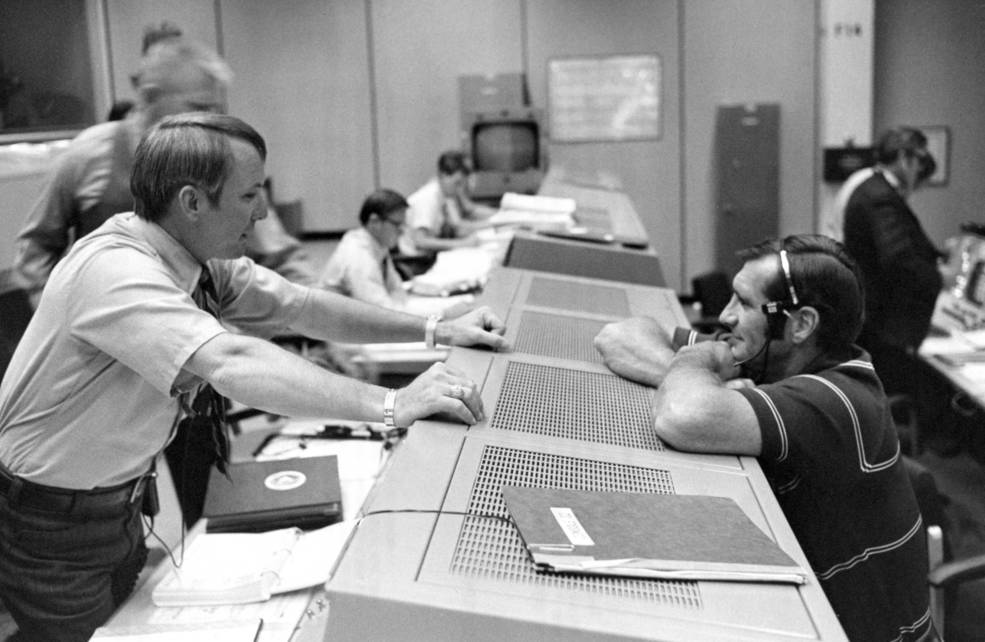
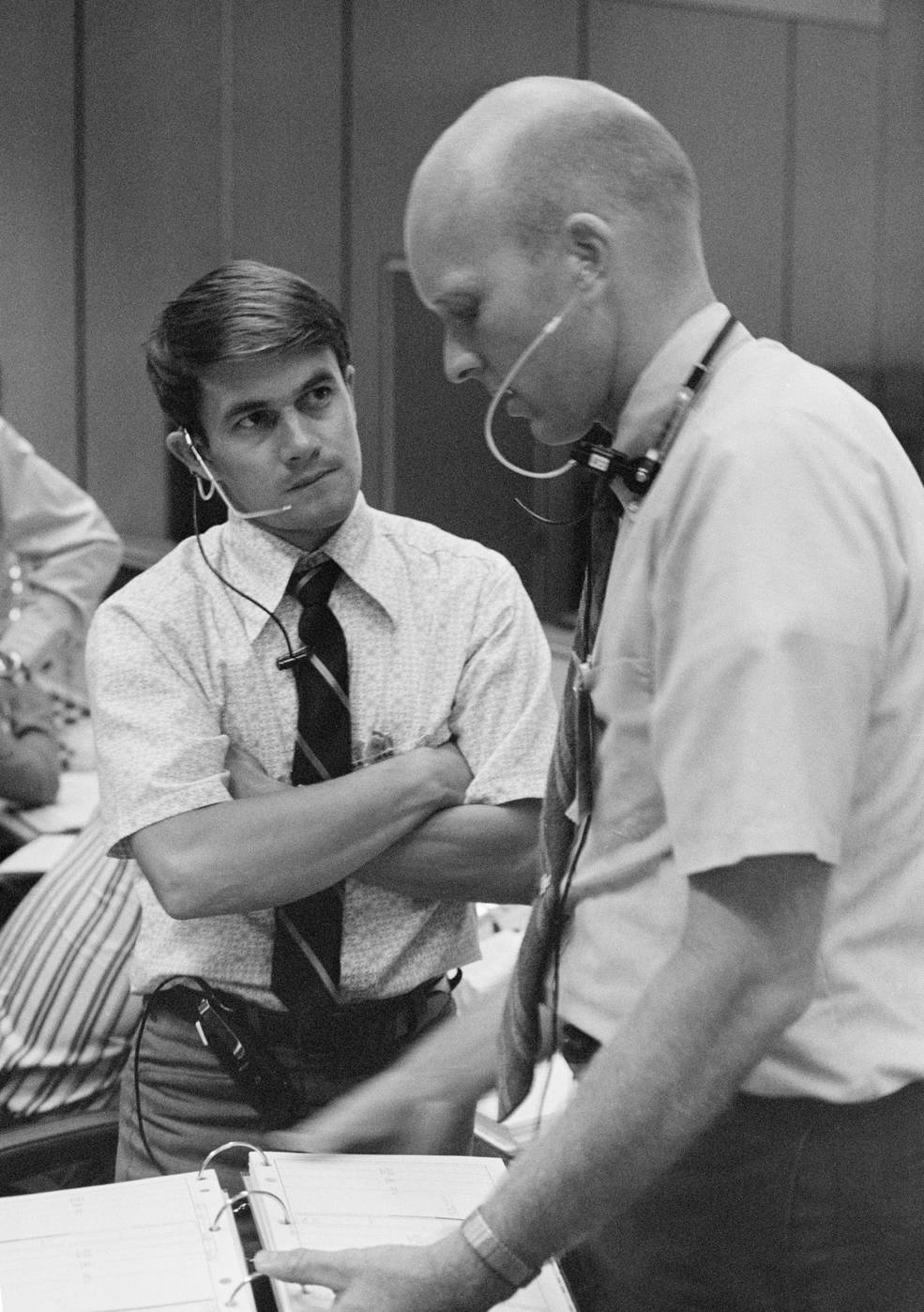
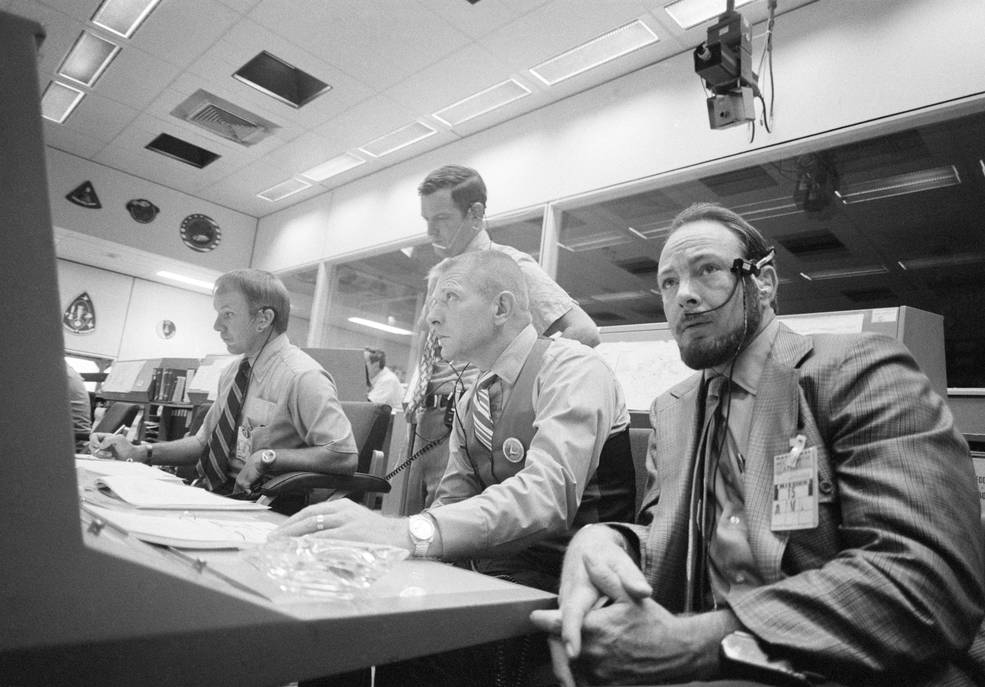
Left: In the Mission Control Center (MCC) at the Manned Spacecraft Center, now NASA’s Johnson Space Center in Houston, Flight Director Gerald D. Griffin, left, confers with Apollo 15 backup Commander Richard F. Gordon. Middle: Astronauts Joseph P. Allen, left, and C. Gordon Fullerton, both capsule communicators during Apollo 15. Right: In the MCC, Flight Directors Griffin, left, Glynn S. Lunney, and Eugene F. Kranz, and astronaut Edgar D. Mitchell monitor the progress of Apollo 15.
When Scott, Worden, and Irwin awoke for their fourth day in space, they had closed the distance to the Moon to just 20,700 miles. Early in the day, Griffin’s team relieved Lunney’s on console, with Allen replacing Parker at the capcom position. Following breakfast, the first task involved a minor midcourse correction, a 0.9 second firing of the SPS engine. Following the maneuver, the next task involved jettisoning the panel that covered the Scientific Instrument Module (SIM) bay in the Service Module. The SIM contained cameras and other instruments and a deployable subsatellite to study the Moon and its environment from orbit. The 5-by-9-foot panel protected these items during launch and the translunar coast. Because the panel used explosives for the jettison, and also because this was the first time the procedure was done during an Apollo mission, as a precaution the astronauts donned their spacesuits but kept them unpressurized. Following the panel jettison, Windler’s team took over the consoles in Mission Control, with Henize now serving as capcom. Several hours later, as previous lunar missions had done, Apollo 15 disappeared behind the leading edge of the Moon and communications with Mission Control stopped as expected. Precisely on time, 78 hours and 31 minutes after leaving Earth, Apollo 15 fired its SPS engine for 6 minutes and 38 seconds to enter orbit around the Moon.
To be continued…
John Uri
NASA Johnson Space Center

























